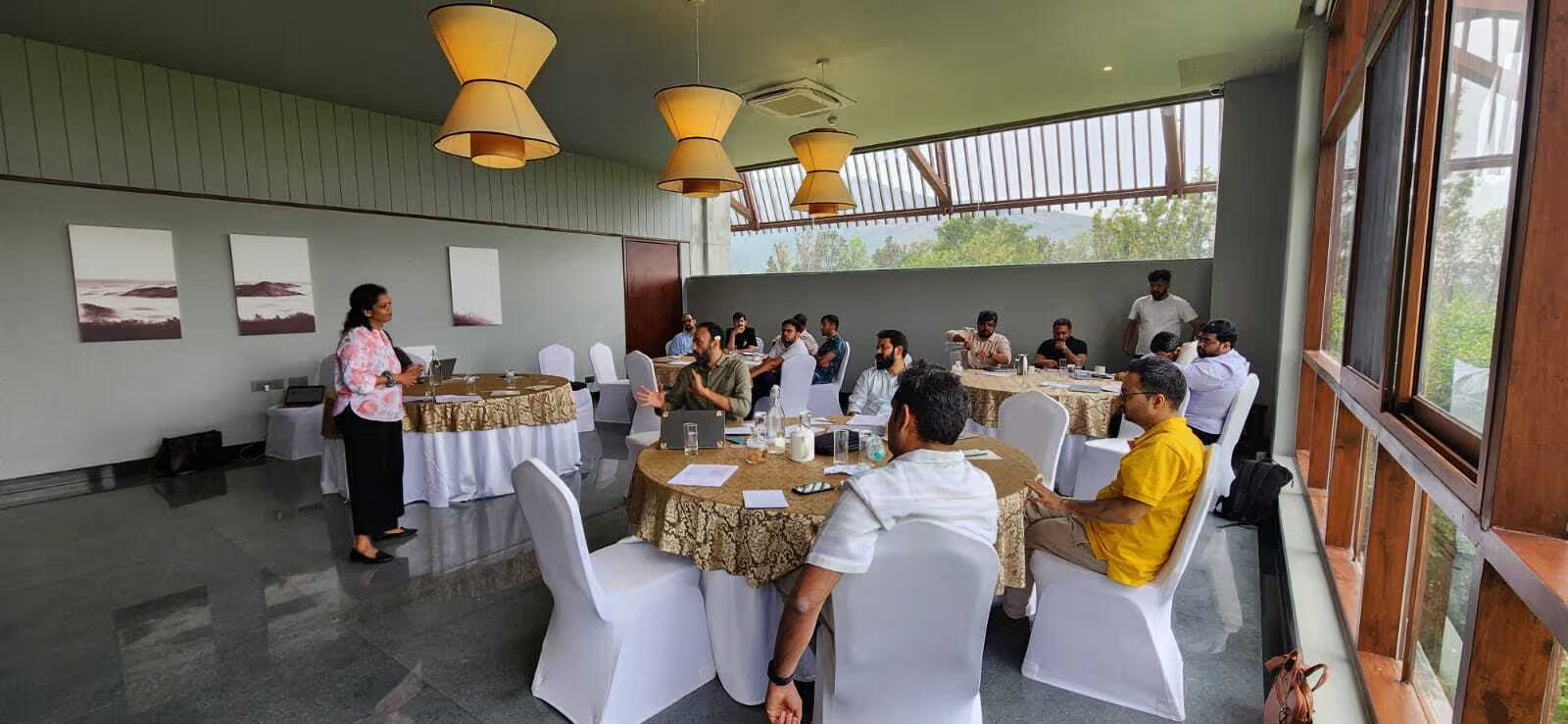The recruitment process in hrm involves the selection of suitable candidates, application management, and interview management. The proper recruitment process ensures a hiring organisation gets the right candidate for the job and maximises talent management.
In today's competitive job market, organisations are constantly looking for new talent to fill vacancies in various positions. This job hiring process is lengthy and involves numerous stages to ensure a hiring organisation gets the right candidate for job openings. Organisations need to hire candidates who would be best suited for job requirements.
All this being said, the recruitment process is essential for organisations. However, it can be daunting for hiring managers if not done well or with care. Here is an overview of the recruitment process in HRM that you need to know before embarking on your journey.
What is Recruitment Process in HRM?
A recruitment process in HRM involves the selection of a suitable candidate for a job.
The pre-recruitment phase includes identifying the job vacancy, conducting market research, and developing a job specification. During this step, candidates are screened and interviewed to determine their suitability for the job. Once the right candidate is identified, they are offered a job interview.
After the interview, candidates are considered for selection or rejection. The post-recruitment phase includes conducting interviews, assessing candidates, and deciding who to hire. This step involves comparing candidates' strengths with job requirements and selecting the best candidate based on these factors.
A recruitment process in HRM requires careful planning and management to ensure that it is completed smoothly without any hiccups.
Planning for Recruitment Process in HRM
Planning a recruitment process when recruiting candidates for open positions is vital. The first step is to conduct recruitment needs assessment. This entails identifying the skills and qualifications required for the work you're hiring for based on the job description and your company's requirements. This will help you narrow down your selection criteria and the number of candidates to consider.
After this, they are developing job descriptions specific to your hiring position is vital. This will detail what candidates should be able to do and show prospective employees what they should be capable of doing in the job. The job description should include the responsibilities, duties, and qualifications required. The last step is creating a recruitment timeline that outlines when and how you will contact candidates.
Finally, you can use online resources to source candidates and generate interest in your role. Using these resources, you can reach potential candidates from diverse backgrounds with the skills necessary for open positions. This will help you narrow down your selection criteria and identify potential candidates with relevant experience and qualifications quickly and efficiently. By planning a recruitment process effectively, you can ensure that your recruitment process is efficient, thorough, and targeted at attracting the right talent for open positions.
Identifying Vacancy
HR professionals in the healthcare industry should be prepared for a recruitment process. Identifying vacancies is the first step in preparing for a recruitment process. This can be done by conducting online searches, creating job descriptions, interviewing candidates, and deciding if they are a good fit. Once you have identified vacancies that need to be filled, the next step is to finalise the hiring process by signing offer letters and issuing paychecks. This process can take some time, so it's essential to plan and stay organised.
Besides recruiting qualified candidates, it's also essential for HR professionals to create a job description and perform an online search to find suitable candidates. The best way to identify qualified candidates is by interviewing them and assessing their strengths and suitability for the job. This process can take time and requires patience, but it ultimately leads to successful hiring decisions. Once you have selected a candidate and finalised the hiring process, you are ready to start hiring and making progress in your organisation.
Job Specification
When preparing for a recruitment process, it is essential to understand the job specification. This information will help you identify the skills and experience required for the position. Additionally, it is vital to review the current job market and understand which areas are in high demand. This can help you develop targeted recruitment strategies that address job openings that match your organisation's needs.
Job Description
If you are searching for the right candidate, take your time and interview each one carefully. Candidates must be able to read and understand the job requirements and be able to answer questions about the job in an interview.
The recruitment process can be time-consuming, but it is worth it if you can find the right candidate for the job.
Job Analysis
Before you start your recruitment process, it's essential to have a clear understanding of the job you are looking to fill. It would help if you did a job analysis to understand the duties and responsibilities required for the position. In addition, you'll want to create targeted job descriptions and procedures for interviewing candidates.
After completing your job analysis, you can search for candidates who meet your requirements. Also, consider conducting internal hiring or training programs to help you select the best potential employees for the position. Once you've completed this step in your recruitment process, you're ready to move forward with interviewing candidates and hiring the right candidate for the job.
Job Evaluation
The recruitment process can be challenging and time-consuming process. It is essential to plan and clearly understand the job evaluation process. Creating a timeline and regularly tracking progress can help streamline the recruiting process. During the job evaluation process, it is vital for hiring managers to define the job description and expectations of the position clearly.
Additionally, it is critical to create a detailed description of the responsibilities, skills, and qualifications required to fulfil this role. The recruitment process aims to find the best candidate for the position.
What is the Selection Process?
The recruitment process is a process by which teams of candidates are evaluated and selected to apply for a job opening. It involves reviewing resumes, conducting interviews, and checking references. It can be time-consuming but also challenging. There are many steps involved in the selection process, and you must be organised and thorough in your preparations.
You must have a clear job description and target market to know precisely what you want from the candidate. The recruiting process can begin with creating a recruitment plan that outlines the steps of the recruitment process.
This will help to stay focused and track any progress made along the way. You must also set up interviews with qualified candidates and ensure that every step is taken to make hiring decisions as quickly as possible.
What Are The Steps In the Selection Process?
Several key steps are involved in the selection process, starting with the job analysis. This step is critical as it helps you understand the job description and identify the essential skills and experience needed for the position. You can use qualification frameworks like the competencies framework, functional specification, or job analysis to help frame your expectations.
After that, you can interview prospective candidates to assess their fit for the role. This will give you a sense of their personality and capabilities for the job. Finally, you'll evaluate candidates based on their performance during the selection process and their potential for further growth in the position. This will help you determine who fits the job description and can do it successfully.
Preliminary Interview
The selection process for an HRM position can be complex, but the right candidate must be chosen. During the interview, candidates' relevant experience and skills are evaluated to ensure they meet the job requirements. The preliminary consultation is an essential step in the selection process and should be conducted as soon as possible. This interview assesses candidates' qualifications and whether they meet the position's requirements.
While conducting a preliminary interview, it is vital not to use this interview solely to determine whether a candidate is suitable for a job. It is important to explore different aspects of a potential candidate's background and character to ensure they are ideal for the job. This interview allows hiring managers to learn more about potential employees and better understand their skills and capabilities.
Receiving Applications
The first step in the process is usually accepting applications from potential candidates. You must carefully review these applications and decide which ones to interview. It is essential to ensure the accuracy and completeness of your application before making a decision.
Include any relevant documents, such as a resume or cover letter. Once you have finished reviewing applications, it's time to decide who to interview. This step in the selection process can be one of the most difficult as you must balance your organisation's needs with those of a candidate.
Screening Applications
The selection process in HRM can vary depending on the position you are looking to fill. The selection process can include screening applications, conducting interviews, and deciding the best candidate for the job.
The screening process aims to find the best candidate for the position. To do this, various methods may be used, including online and face-to-face interviews. The selection process can be time-consuming and challenging, but thorough preparation and a solid approach can yield great results.
Preliminary Tests
The selection process for a recruitment role can be complex and step-by-step. Some key steps to ensure a successful recruitment process include preliminary tests, background checks, and training. These may include psychological evaluations, job sampling, and other assessments to determine if a candidate is qualified for the position.
The selection process must be followed step-by-step to ensure a smooth recruitment process. It is essential to do all the above correctly to hire the right candidate for your business.
Employment Interview
The critical steps in the HRM selection process include reviewing candidate qualifications and interviewing candidates. Interviewing is essential in the selection process because it allows you to assess a candidate's suitability for the position. During an interview, you will typically ask candidates questions about their experience, strengths, and plans for future job growth.
After interviewing candidates, you may conduct reference checks, background checks, and other screening processes to ensure they are suitable for the job. The interviewing process can be stressful, but it is essential to remain calm and focused.
Checking References
When preparing for a recruitment process in HRM, it is essential to understand the steps involved. The selection process begins with screening candidates and ends with interviews. During this process, hiring managers may want to check candidates' references to ensure they are qualified. This can be done by emailing previous employers or asking them directly if they would recommend a candidate.
The selection process also includes interviewing candidates and assessing their skills and experience. As part of this process, hiring managers may request candidates complete an application form or provide relevant information about the job description. After all the critical questions and interviews, the hiring managers choose the candidate that best matches the job requirements.
Final Selection
The selection process for an HRM position can be divided into five key stages: screening, interviewing, assessment, decision-making, and notification. The first step in the selection process is screening, which involves reviewing applicants' resumes and conducting interviews.
Next, interviewers use assessment methods to assess applicants' skills and qualifications and determine if they are good candidates for the job. Once an applicant receives a request, they must complete notification procedures and finalise any paperwork before officially beginning their new career.
Conclusion
The recruitment process requires planning, organisation, and commitment from all stakeholders. It is a lengthy process that includes several human resource management strategies aimed at attracting candidates of desired qualifications and ensuring the selection of suitable candidates for vacancies.
Recruiters then follow up with candidates who have applied for open positions and conduct interviews. After selecting suitable candidates, the recruitment process moves on to conducting reference checks, drug tests, physical examinations, and background verification before the final selection of the applicant.
FAQ
Q. How do HR professionals adapt recruitment strategies to different industries or job levels, considering the varied nature of roles and qualifications required?
A. HR professionals tailor recruitment strategies by first understanding the unique needs of each industry and job level. For industries with high technical requirements, they focus on candidates with specific qualifications and experience. Conversely, for entry-level positions, the emphasis might shift towards potential and adaptability. Therefore, the strategy involves a mix of targeted job postings, personalized outreach, and leveraging industry-specific platforms. This ensures a wide yet relevant candidate pool.
Q. What are the most effective tools and technologies currently being used in the recruitment process to streamline application and selection phases, especially in a digital-first world?
A. In today's digital era, HR professionals utilize a range of tools and technologies. Applicant Tracking Systems (ATS) help streamline the application process by automatically filtering candidates based on predefined criteria. Social media platforms and professional networks, like LinkedIn, are invaluable for reaching passive candidates. Additionally, AI in recruitment streamlines the process multiple times more. AI-powered interviewing software can conduct initial screening, saving time and resources. Together, these tools enhance efficiency and help identify the best candidates faster.
Q. How do organizations measure the success of their recruitment process, and what metrics or KPIs are considered most valuable in evaluating its effectiveness?
A. Organizations measure recruitment success using various metrics and KPIs. Time-to-hire is crucial, indicating the efficiency of the recruitment process. Quality of hire, assessed through performance appraisals and turnover rates, reflects the effectiveness of matching candidates to job requirements. Additionally, candidate satisfaction scores provide insight into the overall recruitment experience. By tracking these metrics, organizations can refine their recruitment strategies for better outcomes.
.avif)










.avif)














